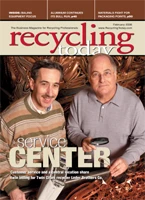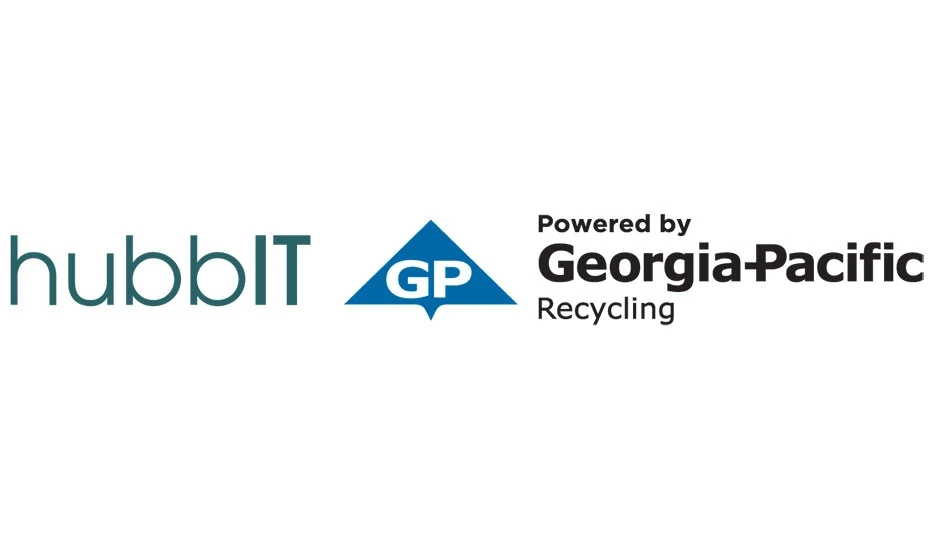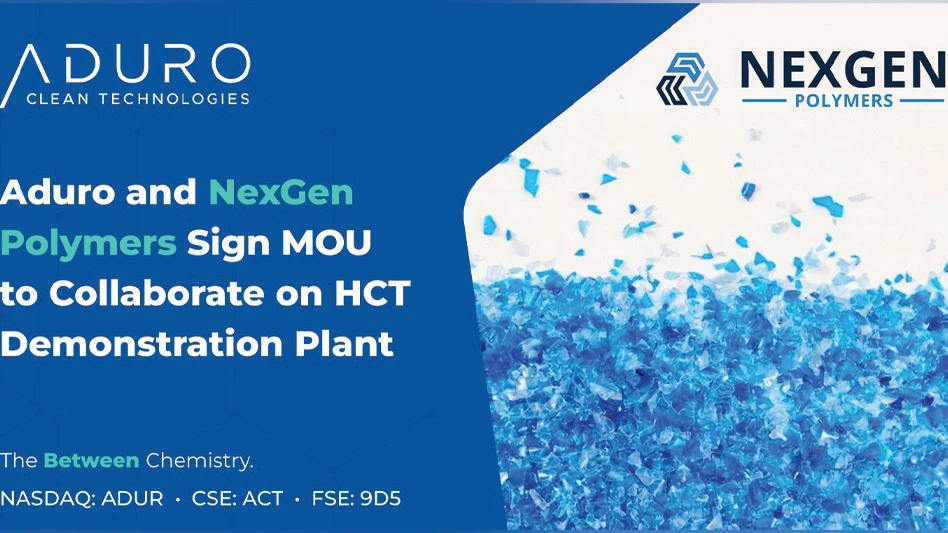
Today, perhaps more than ever, consumers are looking for convenience and ease at the grocery store. As our lives get busier, we have less time and energy to devote to home-cooked meals. The lunches we carry into the yard or the office reflect this. Prepared soups and stews are now available in containers that can go from the lunch bag directly into the microwave and then to the table, no additional container required.
As consumers, we also like the convenience of single-serving containers, a preference that is affecting the way wine is marketed. Single-serving cans are helping wine penetrate markets that were unwelcoming of the glass bottle, like concert clubs. And the plastic beer bottle has moved beyond Miller to microbreweries like San Francisco-based Anchor Brewing, which has introduced Anchor Steam in a plastic bottle, giving it access to sports venues throughout the country.
Consumer preferences for convenience and portability have also played a large role in driving innovations in packaging design, such as microwaveable cans and easy-open single-serving containers.
SPHERE OF INFLUENCE. "Packaging manufacturers must be responsive to the customers’ needs in order to develop and grow their markets," Tom Walpole, vice president of Novelis’s Global Can Technology Team, says. "The changing tastes of consumers have helped drive alternative drinks into the market—energy, functional, sports, coffees, malternatives and branded water and neutraceuticals."
Walpole says today’s target customers have limited brand loyalty and those who are intrigued by innovative products are also intrigued by designer packaging. "A more discerning customer, they expect value along with innovation and are willing to pay a premium for their preferences," he says, citing Red Bull energy drink as an example.
Tom Hale, vice president of sales and marketing for Ball Corp., Broomfield, Colo., and president of the Can Manufacturer’s Institute, Washington, says suppliers of metals-based packaging are innovating in ways that will give their customers an advantage in the marketplace. This often involves convenience, such as providing easy-open and resealable containers.
While consumer preferences influence packaging design, raw material costs also are a concern.
| Migratory Patterns |
|
Energy drinks have been dominated by the slim aluminum can since their introduction. “Probably the most widespread new development in the can market over the past decade has been the growth in custom, non-12-ounce sizes,” Novelis’s Walpole says. “In some cases, a new can size has defined an entire beverage category; for example, the 8.4-ounce trim can is the ‘energy drink can.’”
While aluminum cans appear to have a firm grip on the energy drink market, glass can be described as loosing its grip on the markets it has traditionally dominated. “We will continue to see the migration of beverages from glass to other containers,” Ball’s McCarthy says. Wine, for instance, has made forays into aluminum cans and bottles and into aseptic packaging. Niebaum-Coppola Winery’s Sofia sparkling wine is available in single-serve aluminum cans, complete with a straw, as is Floot Wine. “People want to enjoy wine in places where you can’t take glass,” McCarthy says. Cans are also more durable and cost less to ship than glass bottles, he says.
Bright Brothers, a winery based in Portugal, recently began packaging its BrightPink brand rose in a 750-ml aluminum bottle for the British market. On its Web site (www.brightpink.pt), the company says it chose the package because it “is extremely durable and shatterproof, making it suited to both on- and off-premise drinking, particularly occasions where glass is prohibited.” According to Bright Brothers, the modified stelvin-type cap eliminates the potential for cork taint, while the aluminum protects against UV damage. The container also weighs 66 percent less than a comparable glass container. According to a report on Wine Network New Zealand Ltd. (www.winenetwork.co.nz), which offers wine brokering and consulting services, higher-end wines are selecting heavier glass bottles to convey luxuriousness, but mass-market premium wines are selecting 3-liter boxes and single-serving plastic and aluminum bottles to communicate approachability and convenience. Sutter Home, for example, packages some of its wines in 187 ml, single-serving plastic bottles. In 2005, Beringer’s Stone Cellars brand and Fetzer Vineyards also introduced 187-milliliter plastic bottles. McCarthy says these containers take advantage of the benefits of plastic, which can go places where glass can’t.
Aseptic containers are becoming popular with some wine makers. Canandaigua Wine Co., for example, is packaging its Vendange varietals in 500-ml Tetra Prisma resealable containers. According to a press release from Tetra Pak, the octagonal container holds roughly three glasses of wine, is lightweight and portable and can go places where glass is not allowed.
In addition to the wine market, Tetra Pak’s aseptic containers, which have primarily been used for juice, dairy products, natural beverages, soups and broths, have expanded into prepared foods, sauces, dessert toppings and kids’ healthy beverages, Klein says. While expanding the reach of their products is a primary concern for packaging manufacturers, they are also increasingly interested in the environmental sustainability of their products. |
"Raw material costs are always of concern to packaging companies and customers who use those packages," says Ed Klein, vice president of public and environmental affairs for Tetra Pak USA, based in Vernon Hills, Ill. "Tetra Pak is focused on this effort, making a constant effort to reduce the amount and cost of material used in its packaging," he says.
The aseptic packaging that Tetra Pak makes is comprised of paper (75 percent), polyethylene (20 percent) and aluminum foil (5 percent). Klein says that the containers reduce the overall ratio of package to product to 4 percent package to 96 percent product, while the ratio of glass jar to product averages 15 percent to 85 percent. Until recently, can manufacturers have focused on reducing the cost of their aluminum and steel containers, Hale says. While this focus on cost will always play a part in research and development, can makers are now focused on true R&D innovations, he says, such developing microwaveable and self-heating cans.
INNOVATIVE IDEAS. "Over the past decade in the packaging industry, we have witnessed a radical transformation with new technologies in the marketplace," says Walpole of Atlanta-based aluminum producer Novelis. "The entry and use of competitive type materials, such as laminates and plastics, has soared. Even new types of metal packaging that take on different shapes and sizes have penetrated the market."
An example of innovation among can manufacturers is Ball’s patented Fresh Can Wedge, which Scott McCarthy, Ball’s director of corporate relations, says was introduced to the United States a few months ago with an immunity-boosting beverage known as Defense. The can contains an airtight and watertight plastic capsule that stores time- and liquid-sensitive ingredients in a dry environment until the tab of the aluminum can is pulled, introducing these ingredients to the liquid environment. Ball Packaging Europe and Degussa developed the the Fresh Can.
Other container innovations, such as those used for microwave-ready soups, also couple plastic and metal materials. In order for microwaves to be able to penetrate a metal container, a surface or opening must not contain metal, Hale says. Therefore, either the tops and bottoms or the bodies of the containers are made from steel.
Tetra Pak has also introduced a new microwave-ready container. The company launched the Tetra Wedge in late 2005 to offer consumers a fast and convenient way to get dinner on the table, Klein says. "Consumers like these are very attracted to products in packages like the Tetra Wedge Aseptic Microwaveable because it provides them with the opportunity to make high-quality food right in their microwave. Furthermore, the package is easy to use and has shelf stability, which is also convenient for consumers," Klein adds.
Tetra Pak has also introduced the Tetra Recart container, which Klein describes as a new alternative to the can. "Tetra Recart not only improves the look and taste characteristics of prepared food products, it also provides food manufacturers and grocers with a cost-competitive alternative," he says.
These new containers are not the only changes taking place on grocery store shelves. Products are also migrating into different container materials.
SUSTAINABILITY. While aluminum and steel can producers have often touted the recyclability and sustainability of their products, the industry as a whole is looking at these issues.
"Sustainability is meeting the needs of the present without compromising the ability of future generations to meet their own needs," Tetra Pak’s Klein says. This encompasses economic viability, social responsibility and environmental soundness, he says.
Sustainability also appeals to brand owners, Klein says. "One, many food and beverage manufacturers are becoming increasingly aware of the benefits of relying on renewable resources from both a financial and environmental perspective," he says.
"Two, source reduction makes sense on both levels as well. Shipping and storing a more efficient container that does not rely on costly refrigeration or harmful preservatives is one way companies are saving costs both near term and long term." Companies like Wal-Mart and Starbucks are helping to drive sustainability efforts in this area, he says. "Recycling is very much a part of this concept, but source reduction, energy efficiency and renewable resources also play an important role," Klein says.
The aseptic container is often cited for its limited recyclability, as just 16 million households have access to programs that collect and market the containers. However, access is growing, says Klein. "Last year, beverage carton recycling expanded 9 percent, and we are always trying to further expand recycling," Klein says. He encourages communities that would like to add the containers to their recycling programs to contact him at ed.klein@tetrapak.com.
The recycling rates for aluminum (51 percent in 2004, according to the Can Manufacturers Institute) and steel cans (61.7 percent, according to the Steel Recycling Institute) are often touted, and can manufacturers stress the sustainability of these materials.

"The aluminum can still remains as the country’s most recycled beverage container and has been for more than 20 years," Novelis’s Walpole says. "In 2004, more than 100 billion aluminum beverage cans were produced in the United States, and 51 percent of them were recycled."
The can offers sustainability not only through its recyclability, but also through energy savings throughout the supply chain. "The lifecycle benefits for the aluminum can in combination with low cost make the can, and now the aluminum bottle, the perfect sustainable package," Walpole says. He cites the reduction in energy consumption and in transportation costs as examples of the containers’ sustainability throughout the product value chain.
"Novelis believes that it is important to educate the consumer about the long-term economic, environmental and social benefits to using and recycling aluminum," Walpole says. "That is why Novelis has committed to many national recycling initiatives to reach the consumer about the overall value of the lifecycle of aluminum."
As manufacturers of metal containers innovate, will the recyclability of their products be preserved? According to Ball’s Hale, they will.
Substrates found in microwaveable cans enhance the recyclability of the steel, he says. "You don’t want to separate the metal from the other substrates." Hale says these materials increase the temperature of the steel, making the process more efficient and reducing energy consumption. "It is ultimately more efficient than if you had just a solid piece of steel."
McCarthy says recycling is an important issue for Ball because it is "the right thing to do" and because it offers economic advantages. Conveying this message to the consumer, who drives packaging design, can be difficult, though.
Walpole says it’s challenging to get consumers to think about their packaging choices and material recyclability.
"Our goal is to link aluminum packaging innovation with the recycling benefits for the consumer so that they think about the overall benefits and advantages of this packaging material," he says.
The author is managing editor of Recycling Today and can be contacted by e-mail at dtoto@gie.net.
Get curated news on YOUR industry.
Enter your email to receive our newsletters.
Explore the February 2006 Issue
Check out more from this issue and find your next story to read.
Latest from Recycling Today
- Astera runs into NIMBY concerns in Colorado
- ReMA opposes European efforts seeking export restrictions for recyclables
- Fresh Perspective: Raj Bagaria
- Saica announces plans for second US site
- Update: Novelis produces first aluminum coil made fully from recycled end-of-life automotive scrap
- Aimplas doubles online course offerings
- Radius to be acquired by Toyota subsidiary
- Algoma EAF to start in April





